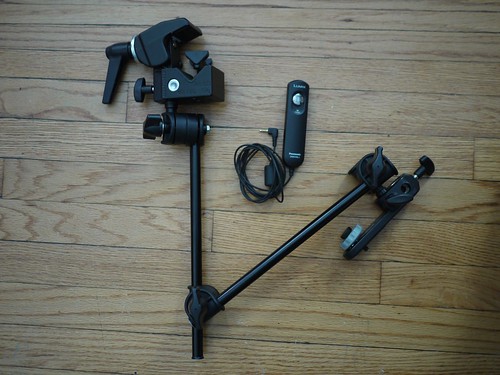 I confess, I’m a raider. When permitted, or rather, when I encounter no explicit prohibitions from library and archive staff, I like to get copies of both information directly useful to a current research project, but also of materials which might be useful on future projects or for friends working on something similar. I move in, pillage what I can, and retreat to pick through the plunder in search of new targets for the next day. I’m an information pack-rat and I refuse to go into rehab. I know there are many of us out there.
I confess, I’m a raider. When permitted, or rather, when I encounter no explicit prohibitions from library and archive staff, I like to get copies of both information directly useful to a current research project, but also of materials which might be useful on future projects or for friends working on something similar. I move in, pillage what I can, and retreat to pick through the plunder in search of new targets for the next day. I’m an information pack-rat and I refuse to go into rehab. I know there are many of us out there.
At some point a library or archive raider will have to admit the benefits of going digital. Increasingly, the weapon of choice is a camera. Anyone who has taken a lot of photographs of documents or books will probably recognize at least some of the basic challenges: 1) making sure the pictures are always in focus, 2) securing enough light, 3) keeping a book or document relatively flat to eliminate shadows, 4) minimizing hand, wrist, or back pain from holding a (good quality) camera for many hours, 5) and, whenever possible, not annoying anyone with the incessant camera clicking.
The ideal solution for some of these problems is to attach your camera to a copy stand. Some libraries, such as the Taiwan national library, and archives such as the US national archives at College Park, for example, already provide access to wonderful copy stands with excellent lighting, but such offerings are still rare. I know several graduate students who have built their own copy stands from scratch, including one who ordered custom cut plexiglas to use as as a flattening cover. These are the true “hackers” who build their solutions with wood, pipes, and tools that go buzz. Let us salute them.

The problem with most copy stands, including those you can order online, is that they are usually not very portable. The most portable alternative I have seen is the use of an articulated arm. I first saw this in action in the US national archives, where I watched in awe as an Israeli scholar sitting nearby clicked away using a camera remote and a camera attached to a metal arm fixed to his table. When I asked him where I might get such a marvelous thing, I was offered the name of a camera accessory store in Tel Aviv.
Fortunately, anyone can piece together a similar solution (no tools required) with a little handy searching on Amazon. The components you need are: a clamp (to attach to a table or bookshelf), an articulated arm (to attach to the clamp), a camera bracket (to attach to the arm), and a decent digital camera. Optional accessories include: a camera remote, an Eye-Fi memory card, and a sock.

My own personal solution uses:
- Manfrotto 035RL Super Clamp with 2908 Standard Stud (around $30)
- Manfrotto 196B-2 143BKT 2-Section Single Articulated Arm with Camera Bracket (around $40)
- A wired camera remote for my camera (I use a Lumix GF1 but many cameras have wired or wireless remotes)
I attach the foldable arm to the clamp, pop the folded contraption into my backpack, and bring it with me to libraries and archives. In the former, I usually camp out in as remote a location as possible, since taking photos can be distracting to others. To prevent any damage to tables or shelves, I put some pieces of scratch paper or a sock in the mouth of the clamp before attaching it. If no table edges are convenient or if I’m taking some quick book photos while standing in the book aisles of a library, I attach my clamp to a nearby shelf and extend or fold the arm as necessary. My wired camera remote has a long enough wire that I usually drop it down by my feet, and operate the button with my foot (a real hacker would create a custom foot lever and they can be bought for some cameras).
The result is a system that allows me to browse through documents or a book and whenever I come to a page or section worth preserving, I can, without picking up a camera, tap my foot on the remote while turning pages or holding documents flat. By using an Eye-Fi memory card, the pictures I take are beamed directly and immediately from the camera to my laptop if configured for a local wi-fi network. To reveal the extent of my surrender to dorkiness, if I take pictures directly in the darker book stacks of a library, I usually wear a headlamp to shine some extra light on the pages. If you try the same, be prepared for strange looks when anyone else stumbles into the same aisle as you while you are at work.
This is an acquisition system that has worked well for me. Are there other experienced raiders out there with tips to offer?
Lead image by Flickr user eiratansey / Creative Commons licensed. Other images by Konrad Lawson.
Edited to clean up HTML, and to include the third image.
 I confess, I’m a raider. When permitted, or rather, when I encounter no explicit prohibitions from library and archive staff, I like to get copies of both information directly useful to a current research project, but also of materials which might be useful on future projects or for friends working on something similar. I move in, pillage what I can, and retreat to pick through the plunder in search of new targets for the next day. I’m an information pack-rat and I refuse to go into rehab. I know there are many of us out there.
I confess, I’m a raider. When permitted, or rather, when I encounter no explicit prohibitions from library and archive staff, I like to get copies of both information directly useful to a current research project, but also of materials which might be useful on future projects or for friends working on something similar. I move in, pillage what I can, and retreat to pick through the plunder in search of new targets for the next day. I’m an information pack-rat and I refuse to go into rehab. I know there are many of us out there.

